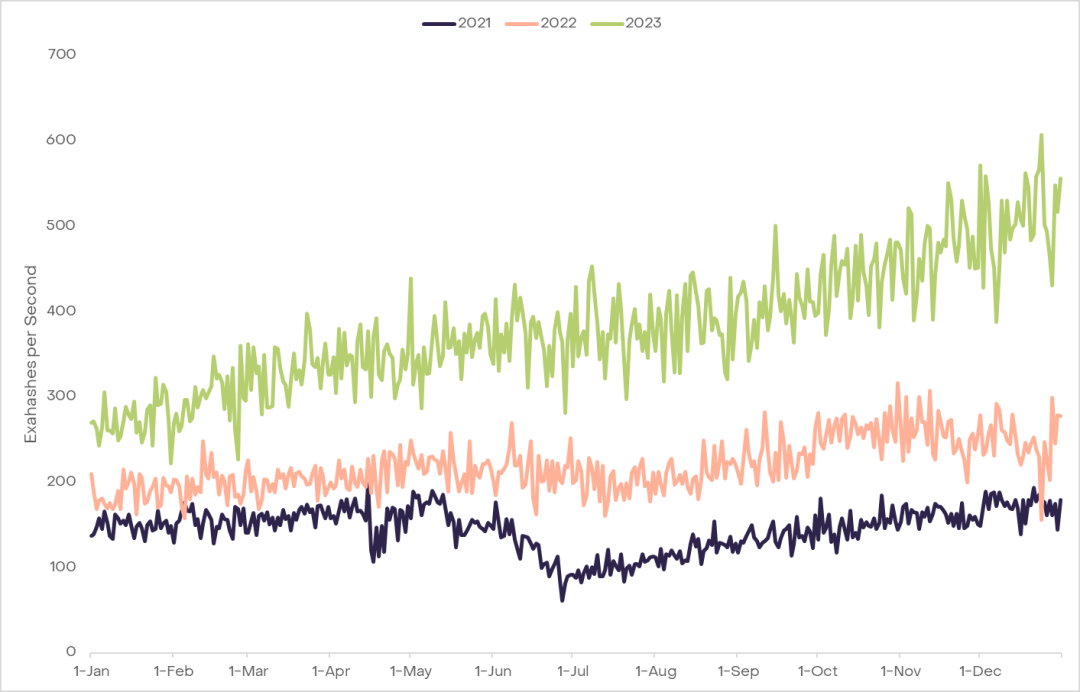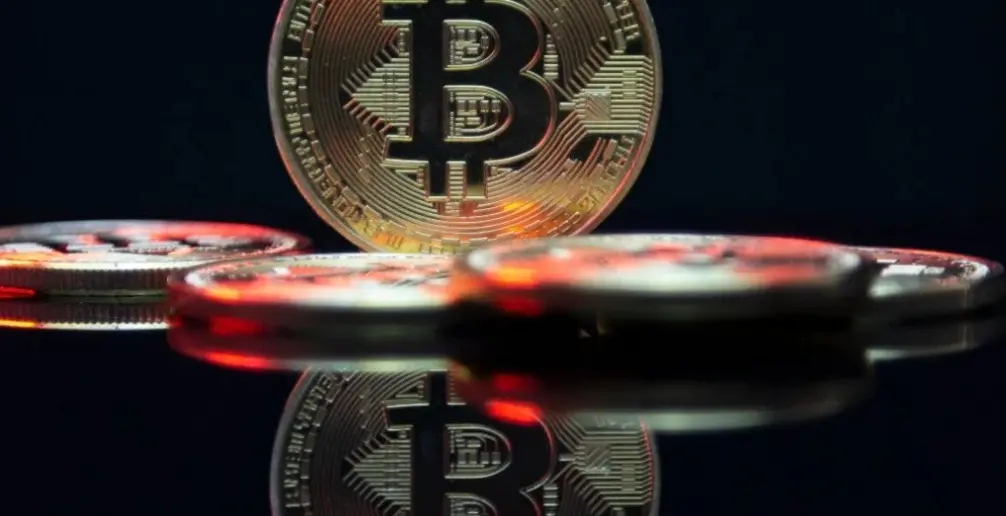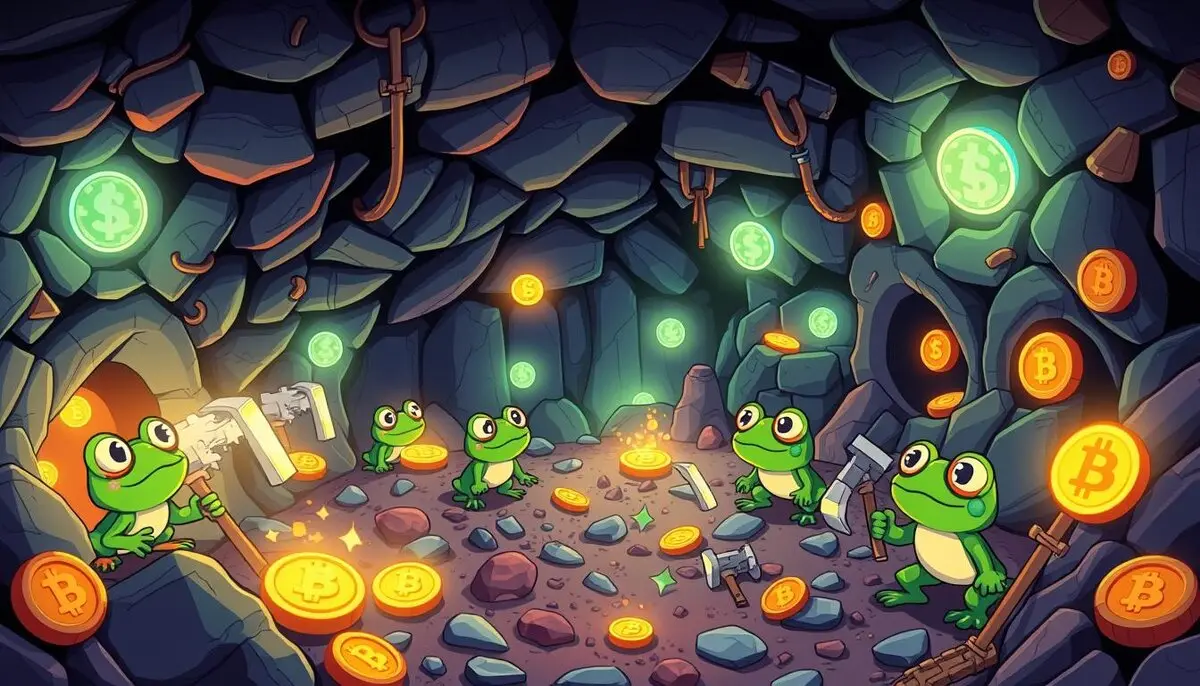Grayscale Report: What’s Different About the 2024 Bitcoin Halving?
Author | Michael Zhao, Grayscale
Compiled by | Gary Ma, Wu Says Blockchain
● Supply Impact: The issuance of Bitcoin will be halved around April 2024. Although miners face income challenges in the short term, the underlying on-chain activity and positive market structural updates make this halving fundamentally different from previous ones.
● Miners' Situation: Facing reduced block reward income and high production costs, miners are raising funds by issuing equity/debt and selling reserves to alleviate short-term financial pressure.
● On-chain Activity Continues to Grow: The emergence of inscriptions has revitalized on-chain activity. As of February 2024, over 59 million NFT-like collectibles have been inscribed, generating over $200 million in transaction fees for miners. This trend is expected to continue, thanks to renewed developer focus and ongoing innovation on the Bitcoin blockchain.
● Impact of Bitcoin ETFs on the Market: The continued adoption of Bitcoin ETFs could significantly absorb selling pressure, potentially reshaping Bitcoin's market structure and providing a new source of stable demand, which is positive for prices.
As we approach the halving in 2024, Bitcoin is not just surviving; it is evolving. With the historic approval of spot Bitcoin ETFs in the U.S. and shifts in capital flows, the structure of the Bitcoin market is changing. In this article, we will delve into the implications, significance, and historical impact of halving on Bitcoin's performance. Then, we will examine the current landscape of Bitcoin and why the situation is markedly different compared to just a year ago.
What is Halving?
New Bitcoins are generated through a process called "mining," where computers solve computationally intensive problems to earn block rewards of new Bitcoins. The issuance of Bitcoin is designed to be limited—approximately every four years, the mining reward is "halved," effectively reducing the number of new tokens issued.

This deflationary characteristic is a fundamental attraction for many Bitcoin holders. While fiat currency supply relies on central banks and the supply of precious metals is influenced by natural forces, the rate of Bitcoin issuance and its total supply have been dictated by its underlying protocol since its inception. The combination of a fixed total supply and a gradually decreasing inflation rate not only creates scarcity but also embeds deflationary characteristics into Bitcoin.
In addition to the obvious supply impact, the compelling excitement and anticipation surrounding Bitcoin halving also stem from its historical association with rising Bitcoin prices:

However, it is important to understand that a price increase after halving is not guaranteed. Given the anticipation surrounding these events, if a price surge were certain, rational investors would likely buy in advance, leading to price increases before the halving. This raises frameworks like the Stock-to-Flow model. While it creates visually appealing charts by associating scarcity with price increases, the model overlooks the fact that this scarcity is not only predictable but also widely known in advance. By observing other cryptocurrencies with similar halving mechanisms, such as Litecoin, we can conclude that the latter did not see sustained price increases after halving. This suggests that while scarcity can sometimes influence prices, other factors also play significant roles.
Rather than attributing post-halving price increases solely to the halving itself, it seems these periods coincide with significant macroeconomic events. For example, in 2012, the European debt crisis highlighted Bitcoin's potential as an alternative store of value during economic turmoil, causing its price to rise from $12 to $1,100 by November 2013. Similarly, during the ICO boom in 2016—injecting over $5.6 billion into altcoins—Bitcoin indirectly benefited, with its price rising from $650 to $20,000 by December 2017. Notably, during the COVID-19 pandemic in 2020, massive stimulus measures exacerbated inflation concerns, potentially pushing investors toward Bitcoin as a safe haven, leading to a price increase from $8,600 to $68,000 by November 2021. These macroeconomic uncertainties and the exploration of alternative investment options seem to coincide with periods of increased interest in Bitcoin, coincidentally occurring around halving times. This pattern suggests that while halving helps reinforce Bitcoin's scarcity narrative, the broader economic context and its impact on investor behavior may also significantly influence Bitcoin's price.
Although the future macroeconomic environment remains uncertain, the impact of halving on Bitcoin's supply structure is certain. Let’s delve deeper into this.
Threats to Miners
Halving poses challenges for Bitcoin miners. As the issuance of Bitcoin decreases from 6.25 BTC per block to 3.125 BTC, the income miners receive from block rewards effectively halves. Additionally, expenses are also rising. Hash rate, which measures the total computational power used to mine and process transactions on the Bitcoin network, is a key input in calculating miners' expenses. In 2023, the 7-day average hash rate surged from 255 EH/s to 516 EH/s, an increase of 102%, significantly exceeding the 41% growth rate of 2022. This spike is partly due to the rise in Bitcoin prices throughout 2023 and companies acquiring more efficient mining equipment to respond to favorable market conditions, highlighting the intensifying challenges faced by miners. The combination of declining income and rising costs may put many miners under strain in the short term.

While the situation may seem dire, there is evidence that miners have long been preparing for the financial consequences of halving. In the fourth quarter of 2023, some miners noticeably sold their on-chain Bitcoin holdings, possibly to establish liquidity ahead of the reduced block rewards. Additionally, significant fundraising activities, such as Core Scientific's $55 million equity issuance, Stronghold's $15 million equity financing, and Marathon Digital's ambitious $750 million mixed equity financing, highlight the industry's proactive stance in enhancing reserves. These initiatives collectively suggest that Bitcoin miners are at least well-positioned to cope with the upcoming challenges in the short term. Even if some miners completely exit the market, leading to a decrease in hash rate, it could result in mining difficulty adjustments, potentially lowering the cost per coin for remaining miners and maintaining network balance.

Despite the challenges posed by reduced block rewards, the roles of inscriptions and Layer 2 (L2) solutions within the Bitcoin ecosystem are becoming increasingly significant, recently emerging as promising use cases. These innovations may provide miners with a glimmer of hope, potentially increasing transaction throughput and boosting network transaction fees.
Inscriptions
As we have previously discussed, inscriptions ("ordinals") represent a groundbreaking innovation within the Bitcoin ecosystem. From simple images to custom "BRC-20" tokens, digital collectibles can be uniquely "inscribed" onto specific satoshis (the smallest unit of Bitcoin, as each Bitcoin can be divided into 100 million satoshis). This new dimension of Bitcoin utility has stimulated significant growth: to date, over 59 million assets have been inscribed, generating over $200 million in transaction fees for miners.

The surge in network fees has profound implications, particularly on November 20, 2023, when Bitcoin network transaction fees first surpassed those of the Ethereum network, setting a new record in recent history. Since the advent of ordinal inscriptions, miners have earned over 20% of total transaction fees from inscription fees multiple times. Even compared to the total volume of other on-chain NFTs, Bitcoin dominated NFT trading volumes in November and December 2023, a development few anticipated at the end of 2022.

The success of inscriptions has impacted the Bitcoin network. Over time, as block rewards decrease, the question of how miners are incentivized to secure the network becomes more pressing. With transaction fees from inscriptions accounting for about 20% of total miner income, this emerging trend of inscription activity provides a new avenue for maintaining network security through increased transaction fees, at least for now.
However, this success also highlights scalability challenges, as users will have to bear higher transaction fees. This may hinder users from conducting basic transactions like transfers. Additionally, Bitcoin's architecture limits programmability, further constraining the development of complex applications that can utilize these inscriptions. This situation underscores the need for scaling solutions that can both increase throughput for efficient transactions and expand use cases, such as trading NFTs and BRC-20 tokens.
In response, the community is exploring avenues like Layer 2 rollups, similar to those adopted by Ethereum, to enhance scalability and usability. There is growing interest in wallets that support Taproot, which offer enhanced privacy and efficiency features, indicating collaborative efforts to address these challenges. As transaction fees on the Bitcoin main chain increase, the development of L2 networks becomes a possible step forward.

As discussed in our previous article on inscriptions, the revival of inscriptions and the introduction of BRC-20 tokens have sparked a cultural shift within the Bitcoin community, attracting a new wave of developers excited about the potential for network expansion. This shift can be considered one of the most significant developments for Bitcoin, as it not only diversifies the ecosystem but also injects new perspectives and innovative projects into the community, driving future growth.
Among the existing Layer 2 (L2) solutions, some have quietly laid the groundwork for this evolution for years. Stacks is a platform that introduced fully expressive smart contracts to Bitcoin. It facilitates the development of various decentralized applications (dApps) that leverage Bitcoin's security, enabling functionalities ranging from DeFi to NFTs. These dApps represent the forefront of Bitcoin's transition to a multifaceted ecosystem capable of supporting a variety of blockchain-based applications.
ETF Capital Flows
In addition to the fundamentally positive on-chain fundamentals, the market structure for Bitcoin appears favorable for post-halving prices. Historically, block rewards have brought potential selling pressure to the market, possibly leading to all newly mined Bitcoins being sold, thereby affecting prices. Currently, the 6.25 Bitcoins mined per block equate to approximately $14 billion annually (assuming a Bitcoin price of $43,000). To maintain the current price, a corresponding buying pressure of $14 billion is needed each year. After halving, this demand will be halved: only 3.125 Bitcoins will be mined per block, reducing the annual figure to $7 billion, effectively alleviating selling pressure.

ETFs generally provide a way for a broader range of investors, financial advisors, and capital market allocators to gain exposure to Bitcoin, which may lead to increased mainstream adoption over time. Following the approval of spot Bitcoin ETFs in the U.S., these newly launched products saw net inflows of approximately $1.5 billion in the first 15 trading days, nearly equivalent to three months of potential post-halving selling pressure. While the initial surge in net inflows may have been driven by initial excitement and pent-up demand, assuming a stable state of net inflows under ongoing adoption and maturation of the Bitcoin ecosystem, ETF liquidity could help offset the continued selling pressure from mining issuance. Sensitivity analysis of daily net inflows ranging from $1 million to $10 million suggests that at the higher end, the reduction in selling pressure could reflect the effects of another halving, fundamentally transforming Bitcoin's market structure in a positive way.
Conclusion
Bitcoin has not only weathered the storm of the bear market but has also challenged outdated perceptions with its developments over the past year. While it has long been hailed as digital gold, recent developments indicate that Bitcoin is evolving into something more significant. Driven by a surge in on-chain activity, supported by significant momentum in market structure, and backed by its inherent scarcity, Bitcoin is demonstrating its resilience. The Grayscale research team will closely monitor its developments before and after the halving in April 2024, as we believe Bitcoin's future is bright and promising.









